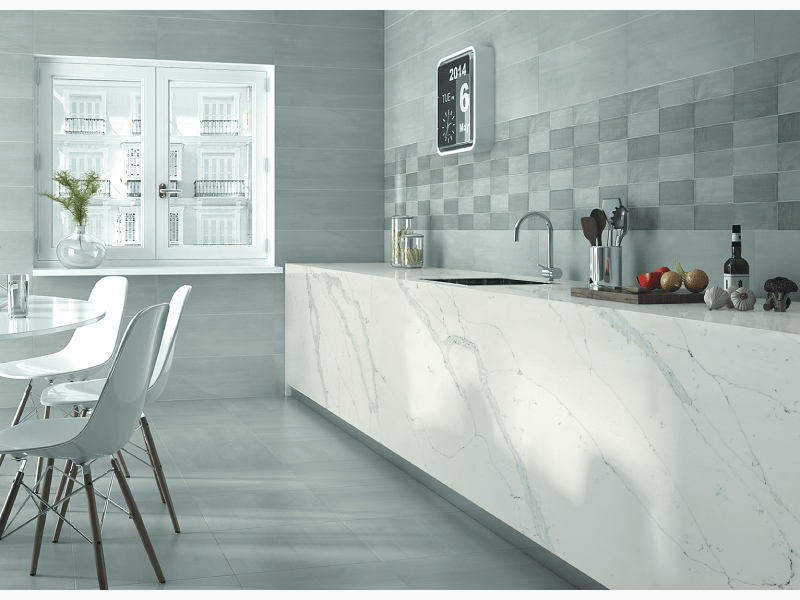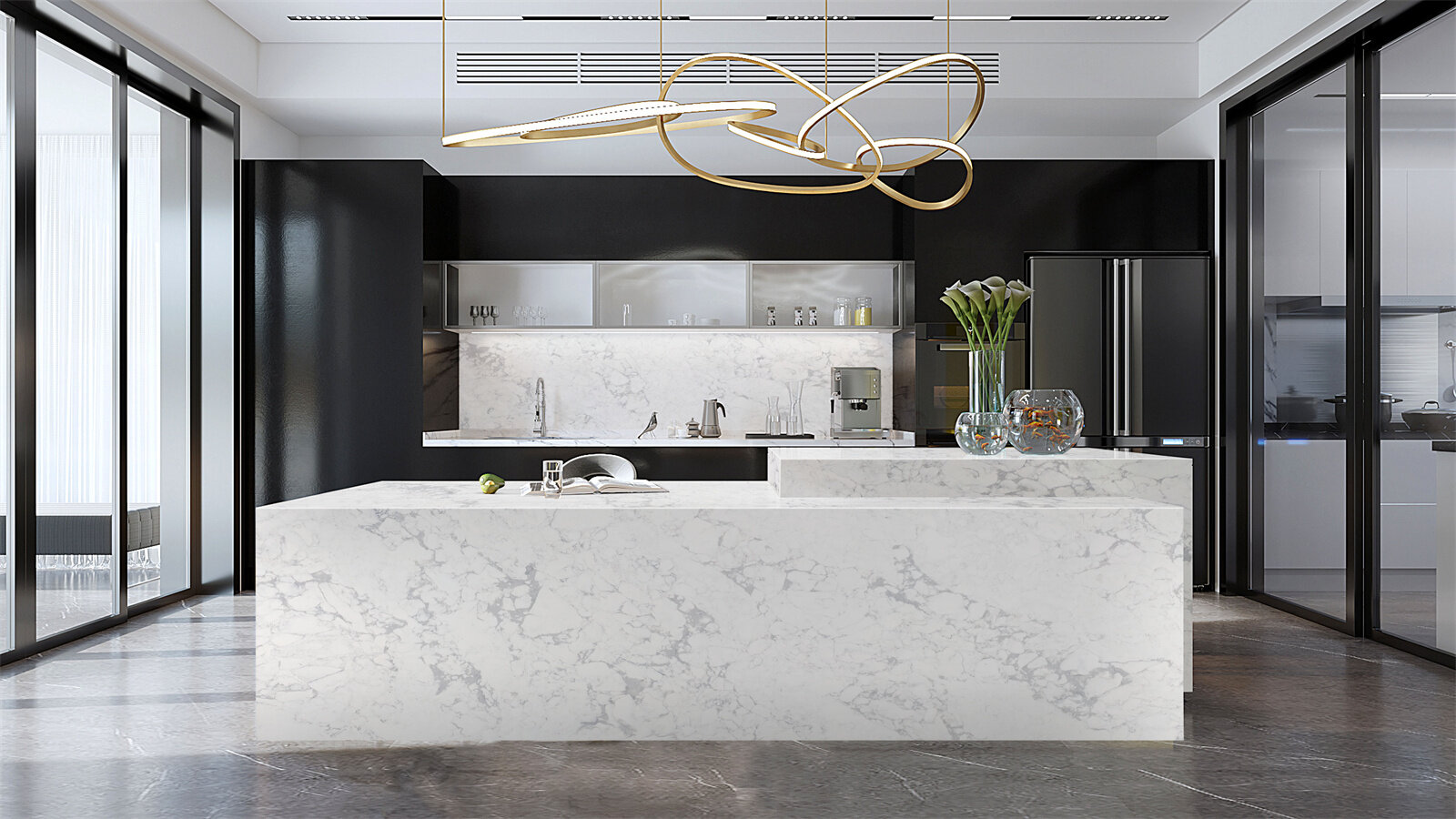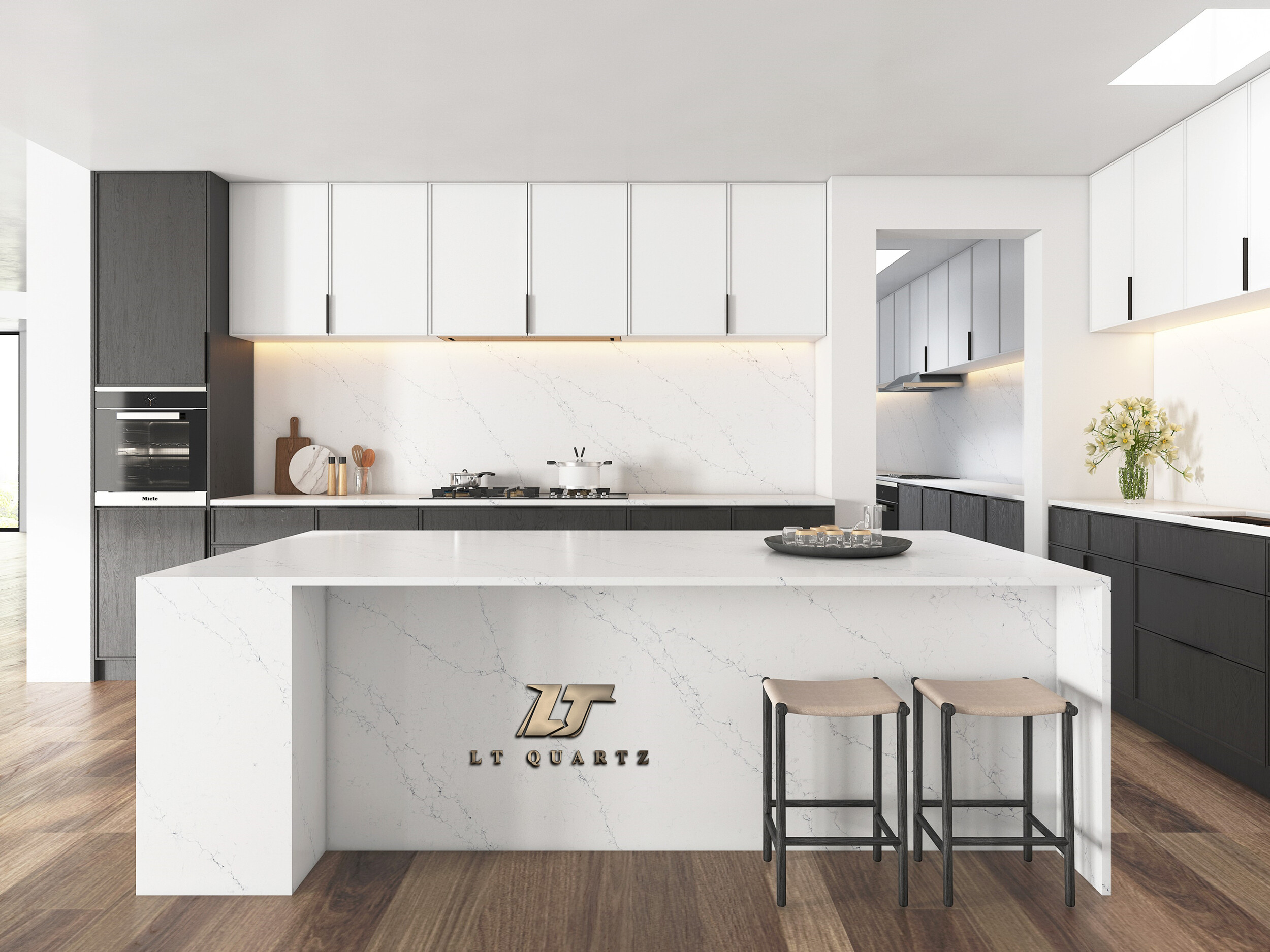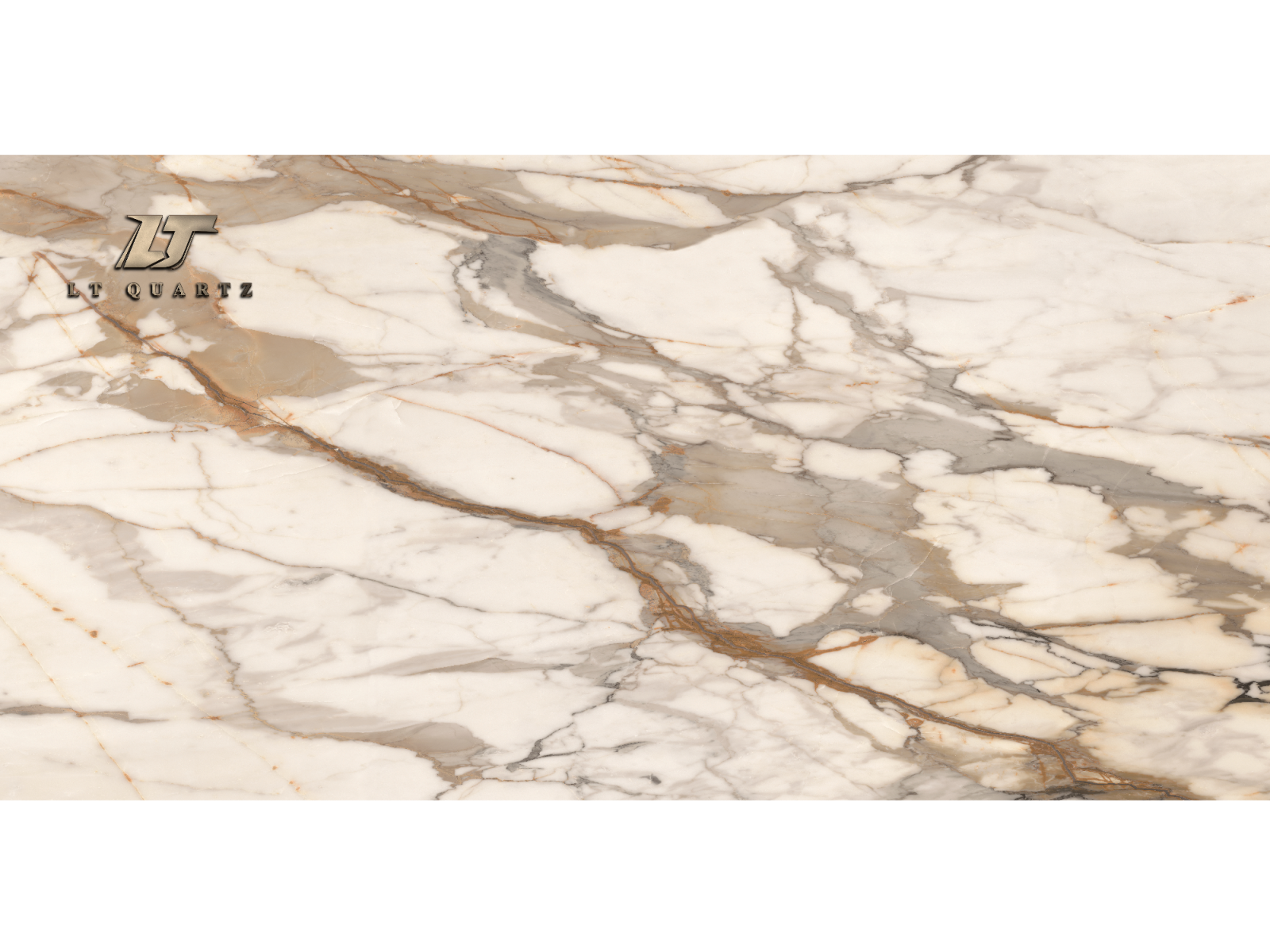Modern kitchens demand surfaces that combine stunning aesthetics with superior functionality, and engineered stone worktops have emerged as the definitive solution for discerning homeowners in 2025. With the engineered stone market growing from $27.64 billion in 2024 to $29.35 billion this year, these innovative surfaces continue to revolutionize kitchen design across residential and commercial spaces worldwide. This comprehensive guide explores why engineered stone has become the premier choice for modern kitchen worktops, examining the latest trends, technological advancements, and design possibilities that make these surfaces an unmatched investment for your home.
The Evolution of Engineered Stone: 2025 Market Trends and Innovations
The engineered stone industry has undergone remarkable transformation in recent years, with 2025 showcasing unprecedented advancements in manufacturing techniques and material composition. Today's engineered stone worktops represent the perfect marriage between natural beauty and cutting-edge technology, offering homeowners surfaces that outperform traditional materials while providing exceptional aesthetic versatility.
What Makes 2025's Engineered Stone Different?
Modern engineered stone has evolved significantly from earlier generations, with manufacturers now focusing on creating products that are not only beautiful and durable but also environmentally responsible. The latest engineered stone worktops contain approximately 90% crushed natural stone (primarily quartz crystals) combined with 10% resins, polymers, and pigments – a composition that delivers remarkable performance characteristics that natural stone simply cannot match.
The manufacturing advancements of 2025 have resulted in engineered stone that offers unprecedented resistance to staining, scratching, and heat damage while requiring minimal maintenance. Unlike natural stone alternatives that demand regular sealing and careful handling, today's engineered stone worktops maintain their pristine appearance with simple everyday cleaning, making them ideal for busy households and commercial environments alike.
engineered stone quartz countertop
Bold Veining and Dramatic Patterns: The New Standard
One of the most striking trends in 2025's engineered stone market is the emergence of dramatically veined surfaces that rival the visual impact of luxury marble. Today's homeowners are gravitating toward high-contrast veining patterns, such as black and gold streaks on brilliant white quartz or deep, marble-like swirls with intricate detailing. These bold aesthetic statements transform ordinary kitchens into extraordinary spaces, with the worktop becoming the central design element that defines the room's character.
Manufacturers have perfected techniques that create remarkably authentic veining that flows throughout the material rather than remaining solely on the surface, resulting in a depth and dimensionality previously achievable only with high-end natural stone. These advancements allow homeowners to enjoy the coveted look of materials like Calacatta marble without concerns about staining, etching, or ongoing maintenance requirements.
Textured Finishes Transforming Modern Kitchens
While polished surfaces remain popular, 2025 has witnessed a significant shift toward textured and leathered finishes in engineered stone worktops. These alternative surface treatments add tactile interest and visual depth that complements contemporary kitchen designs. Leathered finishes, which feature a subtle texture reminiscent of natural stone, provide practical benefits by concealing fingerprints and water spots while adding a sophisticated, organic quality to the material.
Industry experts note that textured finishes are particularly appealing for homeowners seeking to create kitchens with warmth and character rather than clinical perfection. These finishes work exceptionally well in both modern and transitional kitchen styles, offering versatility that polished surfaces sometimes lack.
Comparing Engineered Stone to Other 2025 Worktop Materials
As kitchen design evolves, homeowners face increasingly diverse options for worktop materials. Understanding how engineered stone compares to alternatives is essential for making informed decisions that balance aesthetics, performance, and value.
Engineered Stone vs. Natural Stone: The 2025 Perspective
Natural stone continues to hold appeal for its unique character and organic beauty, but engineered stone offers significant advantages in performance and consistency. In terms of durability, the ranking places quartzite at the top, followed by granite and quartz, with marble being the least durable. However, engineered stone's uniform composition eliminates the unpredictability of natural stone, providing reliable performance throughout the entire surface.
The non-porous nature of engineered stone makes it inherently resistant to staining and bacterial growth – a significant advantage over natural stone options like marble and granite, which require regular sealing to prevent moisture absorption. For households where food preparation safety is paramount, this hygienic quality represents a compelling reason to choose engineered stone over natural alternatives.
Porcelain Countertops: The Rising Competitor
Porcelain has emerged as a formidable competitor to engineered stone in 2025, gaining popularity for its exceptional durability and heat resistance. Ultra-thin porcelain slabs offer a sleek, contemporary profile that appeals to minimalist design sensibilities, while the material's resistance to UV radiation makes it suitable for both indoor and outdoor applications.
Despite porcelain's impressive technical specifications, engineered stone maintains advantages in terms of depth, warmth, and variety of finish options. While porcelain excels in mimicking the appearance of natural materials, it lacks the dimensional quality and subtle variations that make engineered stone surfaces so visually captivating.
Cost Considerations for Premium Worktop Materials
Investment value remains a significant factor in worktop selection, with engineered stone offering exceptional long-term returns. While initial costs typically exceed laminate and some tile options, engineered stone's durability and timeless appeal contribute to increased home value – an important consideration for homeowners planning eventual resale.
The engineered stone market's projected growth to $35.47 billion by 2029 reflects increasing recognition of its value proposition. When factoring lifetime costs, including maintenance, repairs, and replacement, engineered stone frequently emerges as the most economical premium surface option, particularly when compared to natural stone varieties requiring specialized care.
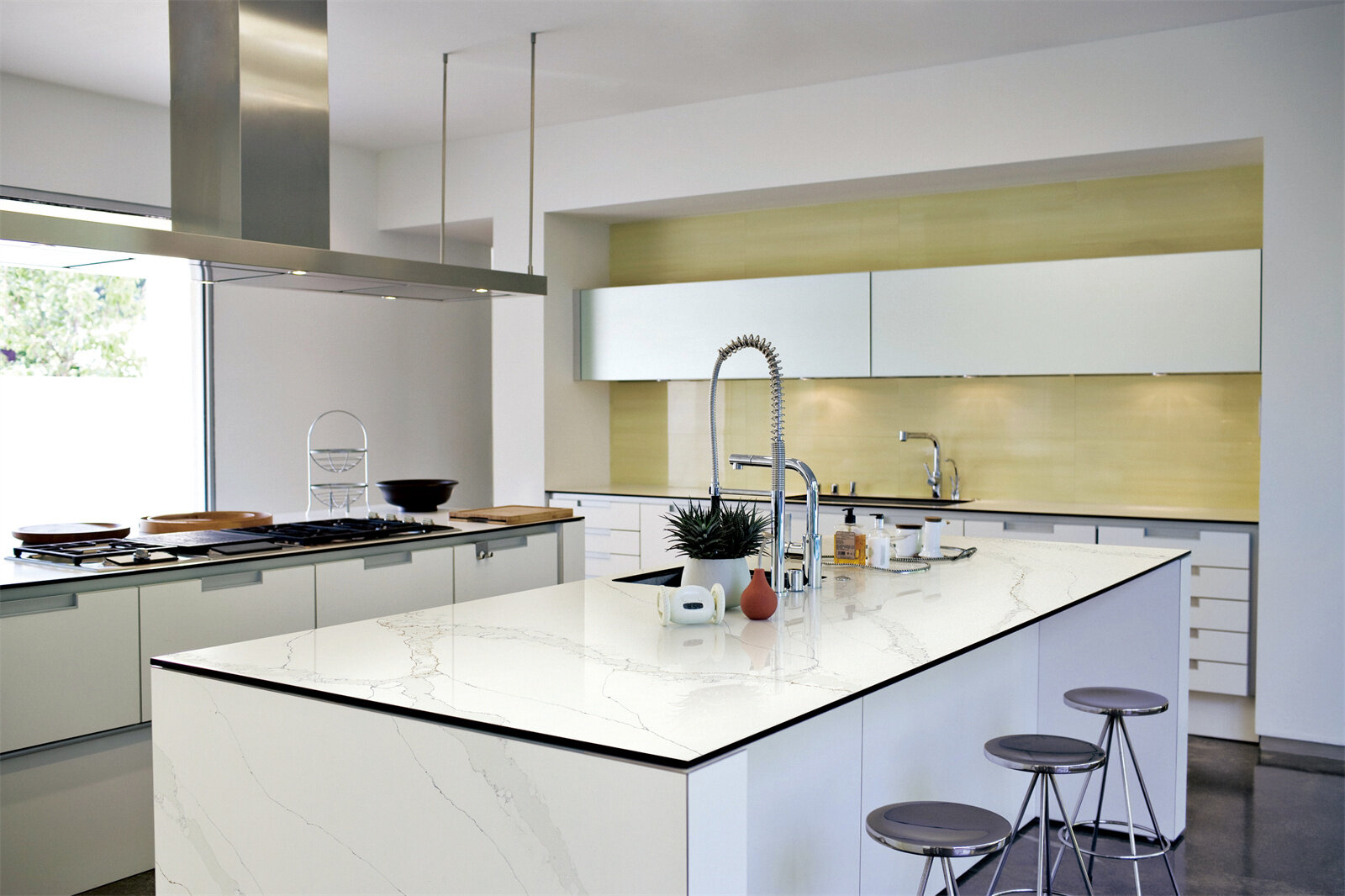
engineered stone kitchen worktops
Design Trends: How to Style Engineered Stone in Modern Kitchens
The versatility of engineered stone makes it remarkably adaptable to diverse kitchen styles, from minimalist contemporary to warmly traditional. Understanding current design approaches helps homeowners maximize their worktop's visual impact.
Color Trends for Engineered Stone in 2025
While classic whites and neutrals remain perennially popular, 2025 has introduced bolder color options in engineered stone worktops. The market now offers an expanded palette ranging from soft pastel shades to vibrant jewel tones, allowing homeowners to create truly personalized spaces. Particularly trending are earthy hues that connect interior spaces with natural environments, including warm beiges, soft greens, and subtle terracotta tones.
Dramatic dark tones have also gained significant traction, with deep charcoals, rich browns, and true blacks offering sophisticated alternatives to lighter options. These darker surfaces create striking contrasts in kitchens with light cabinetry, establishing the worktop as the room's visual anchor.
Seamless Installation with Jumbo Slabs
One of the most significant technical advancements in engineered stone is the availability of jumbo slabs that enable truly seamless installations. These larger format materials eliminate the need for multiple seams across extended worktop runs, creating cleaner, more visually harmonious surfaces. For kitchen islands, particularly those with waterfall edges, seamless installation represents a genuine luxury that elevates the entire space.
Professional fabricators now employ advanced techniques to create nearly invisible joints when seams are unavoidable, further enhancing the material's premium appearance. This technical capability gives engineered stone a distinct advantage over natural materials, which frequently require visible seams due to size limitations and structural considerations.
Mixing Materials: Creating Contrast in Kitchen Design
Contemporary kitchen design increasingly incorporates mixed materials to create visual interest and functional zones. Engineered stone worktops pair exceptionally well with complementary surfaces like wood, metal, and concrete, allowing designers to create sophisticated compositions with varied textures and tones.
A particularly effective approach involves using engineered stone for primary work surfaces while introducing secondary materials for specific areas like island tops, breakfast bars, or butler's pantries. This strategic mixing of materials adds depth and character to kitchen designs while maintaining the performance benefits of engineered stone in high-use areas.
calacatta cloud quartz countertop
Sustainability Meets Luxury: Eco-Friendly Engineered Stone Options
Environmental consciousness has become a driving force in material selection, with homeowners increasingly prioritizing sustainability alongside performance and aesthetics. The engineered stone industry has responded with significant innovations in eco-friendly manufacturing.
Eco-Friendly Production Methods in Modern Manufacturing
Leading manufacturers have implemented production processes that dramatically reduce environmental impacts through energy efficiency, water conservation, and emissions control. These advancements allow environmentally conscious consumers to select engineered stone without compromising their sustainability values.
The industry's shift toward more sustainable practices includes adopting manufacturing technologies that require less energy and generate fewer greenhouse gases, representing substantial progress toward reducing the carbon footprint associated with worktop production.
Recycled Content in Premium Engineered Stone
A major advancement in sustainable engineered stone is the incorporation of recycled materials without sacrificing performance or appearance. Today's eco-friendly options may include recycled glass, mirrors, industrial waste products, and even reclaimed natural stone, significantly reducing the demand for virgin raw materials.
These recycled-content engineered stones offer the same durability and aesthetic qualities as conventional options while appealing to environmentally conscious consumers. As sustainability becomes an increasingly important purchasing factor, these materials represent the future direction of the industry.
How Sustainable Practices Affect Durability and Performance
Contrary to early concerns that eco-friendly materials might compromise performance, today's sustainable engineered stone options frequently outperform conventional alternatives. The incorporation of advanced recycled materials often enhances properties like flexural strength and impact resistance, resulting in worktops that are both environmentally responsible and exceptionally durable.
The longevity of engineered stone itself represents a form of sustainability, as its extended lifecycle reduces the need for replacement and minimizes the environmental impact associated with manufacturing and installing new surfaces. When viewed through the lens of lifetime resource consumption, high-quality engineered stone emerges as one of the most sustainable worktop options available.
Calacatta Quartz Countertop Manufacturer
Smart Integration: Taking Engineered Stone Worktops to the Next Level
The confluence of material science and smart technology has created new possibilities for engineered stone worktops that go beyond traditional surface functionality. These innovations represent the cutting edge of kitchen design in 2025.
Integrated Features: Beyond the Basic Worktop
Forward-thinking manufacturers now offer engineered stone worktops with built-in technological features that enhance functionality without compromising aesthetics. Integrated wireless charging stations eliminate cord clutter, allowing devices to power up directly from the worktop surface. These thoughtful integrations represent the growing trend toward seamless technology incorporation in kitchen environments.
Another significant advancement is the development of seamless integrated sinks made from the same engineered stone as the worktop itself. These monolithic installations eliminate the hard-to-clean seam between sink and worktop, creating a hygienic, visually harmonious solution that epitomizes modern kitchen design.
Heat-Resistant Technology Advancements
While conventional engineered stone offers good heat resistance, the latest innovations have elevated this performance characteristic to exceptional levels. Advanced formulations now withstand higher temperatures without damage, reducing concerns about hot cookware affecting the surface integrity. Some premium options even incorporate heated sections for specific functions, such as maintaining serving temperatures or creating designated areas for proofing dough.
These technical advancements address one of the few historical limitations of engineered stone, making it an even more compelling choice for serious cooking environments where thermal performance is essential.
Maintenance Innovations for Busy Households
The inherent low-maintenance qualities of engineered stone have been further enhanced through surface treatments that reduce cleaning requirements and extend aesthetic longevity. Advanced sealants integrated during manufacturing create surfaces that actively resist staining and bacterial growth, minimizing the need for special cleaners or maintenance routines.
Some cutting-edge products now incorporate antimicrobial technology directly into the material composition, creating inherently hygienic surfaces that inhibit bacterial growth – a particularly valuable feature in kitchens where food safety is paramount.
Printed Quartz Worktop Supplier
Conclusion: Why Engineered Stone Defines 2025 Kitchen Design
As we navigate 2025's kitchen design landscape, engineered stone worktops stand unrivaled in their combination of aesthetic versatility, exceptional performance, and environmental responsibility. Their continued market expansion reflects growing recognition of their superior value proposition compared to both traditional and emerging alternative materials.
For homeowners investing in new kitchen spaces, engineered stone offers the perfect blend of practical functionality and design sophistication. Its ability to withstand the rigors of daily use while maintaining its beauty makes it an ideal choice for busy modern households where the kitchen serves as both a workspace and social hub.
As manufacturing techniques continue to advance, we can expect engineered stone to further consolidate its position as the premier worktop material, with ongoing innovations in sustainability, performance, and design flexibility. Whether your aesthetic leans toward timeless elegance or bold contemporary statements, engineered stone worktops provide the ideal foundation for creating the kitchen of your dreams in 2025 and beyond.

